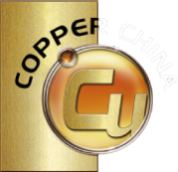Today, it has transformed into China's first national economic and technological development zone dedicated to circular economy as its core undertaking.
Urban mines generally refer to discarded household appliances and electronic waste rich in rare and precious metals, such as lithium, titanium, gold, indium, silver, antimony, cobalt and palladium.
In a production workshop at GEM Co Ltd in Tianjin, a warehouse spanning over 2,000 square meters is filled with various types of batteries awaiting processing.
In 2023, GEM recycled and reused over 20,000 metric tons of nickel resources, accounting for more than 20 percent of China's primary nickel extraction, the company said.
The China Association of Circular Economy said approximately 260 million tons of scrap steel were recycled in China in 2023, accounting for around 25 percent of total crude steel production.
Recycled nonferrous metal output reached about 17.6 million tons in China in 2023, roughly 25 percent of total nonferrous metal production, while recycled pulp production neared 60 million tons, making up about 70 percent of total pulp production.
As a hub for circular economy, Tianjin has developed an industrial chain focused on urban mining, leading the country in areas such as the recycling of discarded electronic appliances, circular transformation of industrial parks and water resources recycling.
On Oct 18, China Resources Recycling Group Co Ltd, a centrally administered State-owned enterprise, was officially launched in Tianjin.
The newly established enterprise will specialize in resource recycling and reuse, undertaking the important task of building a national platform in this respect.
Tianjin is among many cities in the country stepping up efforts to pursue a circular economy.
In Hefei, capital of East China's Anhui province, food waste collected from urban communities and dining establishments is transformed into raw material for biodiesel production by China Energy Conservation and Environmental Protection Group.
As one of the leading waste treatment facilities in China for comprehensive waste utilization, the factory is designed to process around 730,000 tons of municipal waste annually.
To accelerate the construction of a waste recycling system and consolidate green and low-carbon foundations for the country's quest to achieve high-quality development, the State Council — China's Cabinet — has also released a guideline specifying goals and measures.
By 2025, the annual utilization volume of major renewable resources such as scrap steel, scrap copper and scrap aluminum is expected to reach 450 million tons, according to the document.
"The circular economy significantly enhances resource utilization efficiency," said Zhu Liyang, president of the China Association of Circular Economy. "It is truly a 'gold mine'."
Source: China Daily
